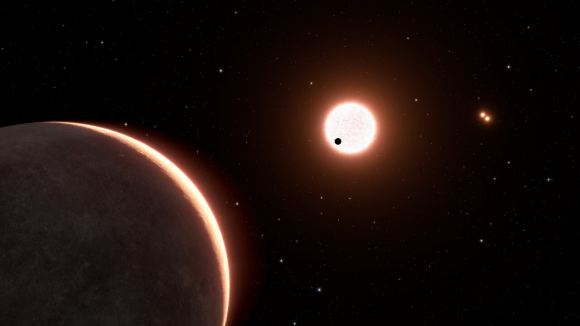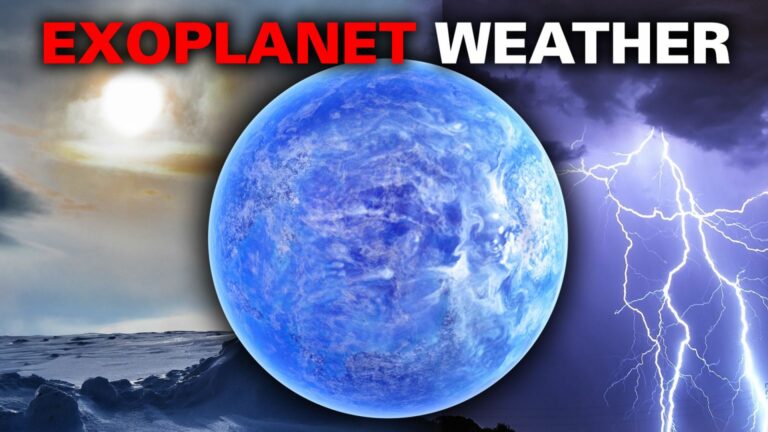Insights from Solar System Weather: A Window into Exoplanetary Climates
The methodology employed by astronomers to study planets within our solar system bears remarkable similarities to the approach used for studying exoplanets, despite the substantial difference in distance. Spectroscopy plays a pivotal role—examining the wavelengths of light reaching a telescope from a planet’s atmosphere.
Distinct molecules permit specific wavelengths to pass through, resulting in unique patterns in the spectrum. These patterns offer scientists insights into the composition of an atmosphere. While visiting nearby planets provides more detailed information, this undertaking is both costly and challenging. For instance, the last visit to Uranus was carried out by Voyager 2 in 1986. Consequently, the study of Uranus today parallels the approach taken in studying exoplanets—utilizing telescopes. A recent examination of planetary atmospheres, both within our solar system and beyond, illuminates the intricate complexity and diversity of weather phenomena in our solar system.
It also sheds light on what we might anticipate discovering around other stars. However, the review also underscores the existing gaps in our understanding of our immediate celestial neighbors, emphasizing the presence of numerous unknowns.

We’ll skip Mercury since it lacks a substantial atmosphere due to its proximity to the Sun. Venus, on the other hand, boasts a robust atmosphere filled with a dense mixture of greenhouse gases. Variable levels of sulfur dioxide in Venus’ atmosphere suggest potential volcanic activity on the surface. Additionally, the discovery of phosphine, a molecule associated with life, has intrigued astronomers, although recent doubt surrounds this finding.
Observations reveal that Venus’ atmosphere is not uniform, featuring distinct layers at various altitudes with thick clouds and hazier, variable regions. A particularly dense layer exhibits a mysterious feature absorbing UV-blue light, causing extreme heating—a phenomenon yet to be deciphered. Moving outward, Mars possesses the second most well-understood weather patterns in the Solar System after Earth. Its thin carbon dioxide atmosphere occasionally produces water-based clouds, and fog and frost can form during Martian winter or at dawn and dusk.
Notably, Mars experiences planet-wide dust storms, with seasonal variations in hydrogen peroxide and methane hinting at the potential for microscopic life. Jupiter displays a tumultuous atmosphere with colorful bands revealing gas movements. Light-colored stripes indicate rising gas, while darker areas represent sinking air. Enormous storms like the Great Red Spot churn vast regions, and ammonia haze condenses into slush and hail.
Saturn exhibits great white spots, giant storms that seem confined to the northern hemisphere, contributing to its relatively uniform color due to a ‘taller’ and less compact atmosphere. Titan, Saturn’s moon, mimics Earth’s atmosphere with clouds of condensed methane forming and raining back to the surface, collecting in shallow lakes. Understanding Titan’s weather cycles, including the possibility of thunderstorms, remains a focus for astronomers. Uranus and Neptune, both composed of hydrogen and helium atmospheres, differ in significant ways. Neptune radiates heat, while Uranus is in equilibrium, exhibiting minimal convective activity. Both planets undergo seasonal changes, and further long-term studies aim to unravel these variations. The exploration of our solar system’s diverse atmospheres provides valuable insights for understanding exoplanets.

However, as we accumulate more data on exoplanets, the direction of knowledge transfer is expected to invert. A more extensive array of exoplanets available for study will enhance our understanding of the position of our solar system’s planets within the broader galactic population. Consequently, the collaboration between researchers focused on the solar system and those dedicated to studying exoplanets is poised to become significantly more intriguing.
This article is republished from Universe today under a Creative Commons license. Read the original article.
Do not forget to share your opinion with us to provide you with the best posts !




0 Comments